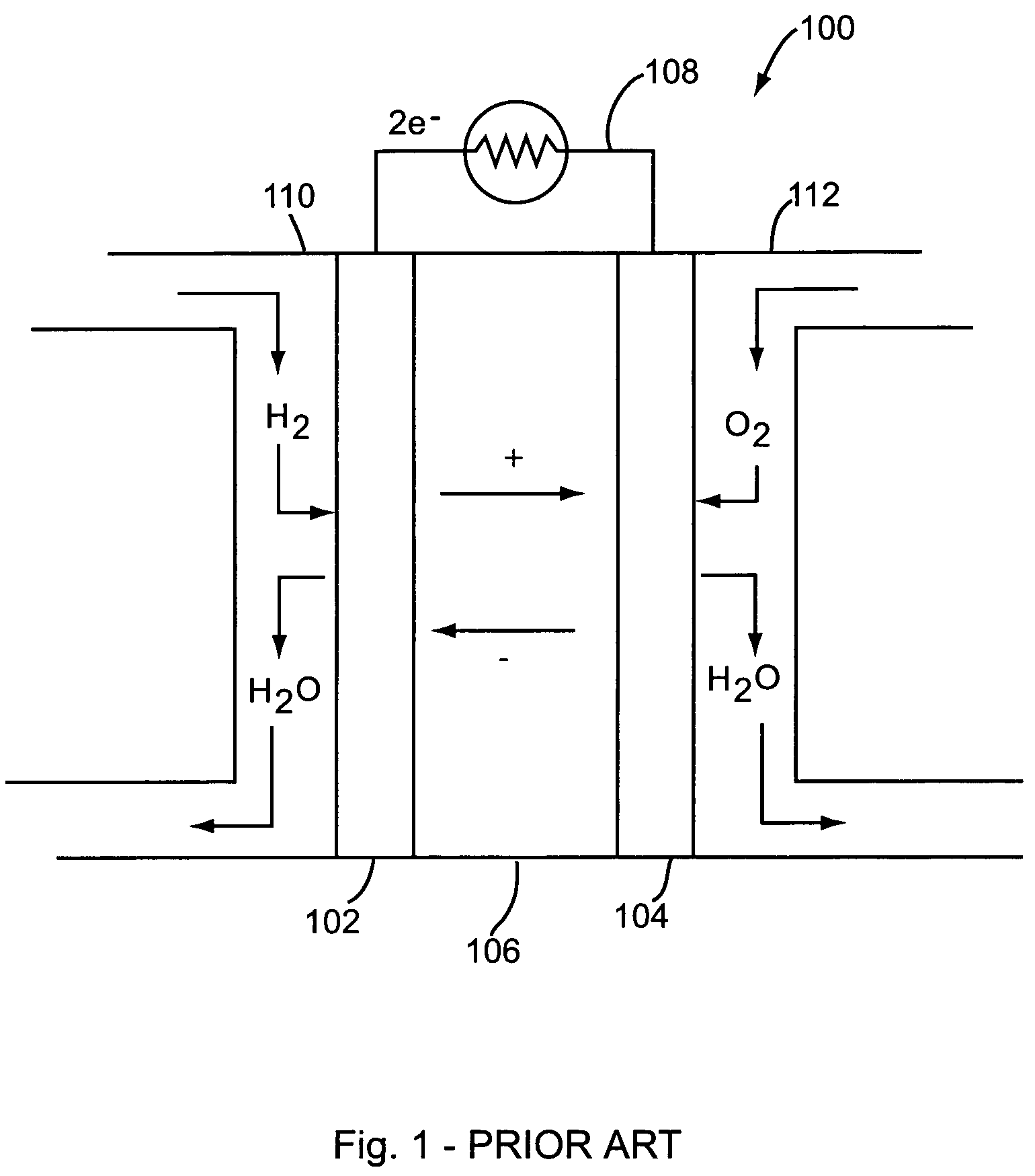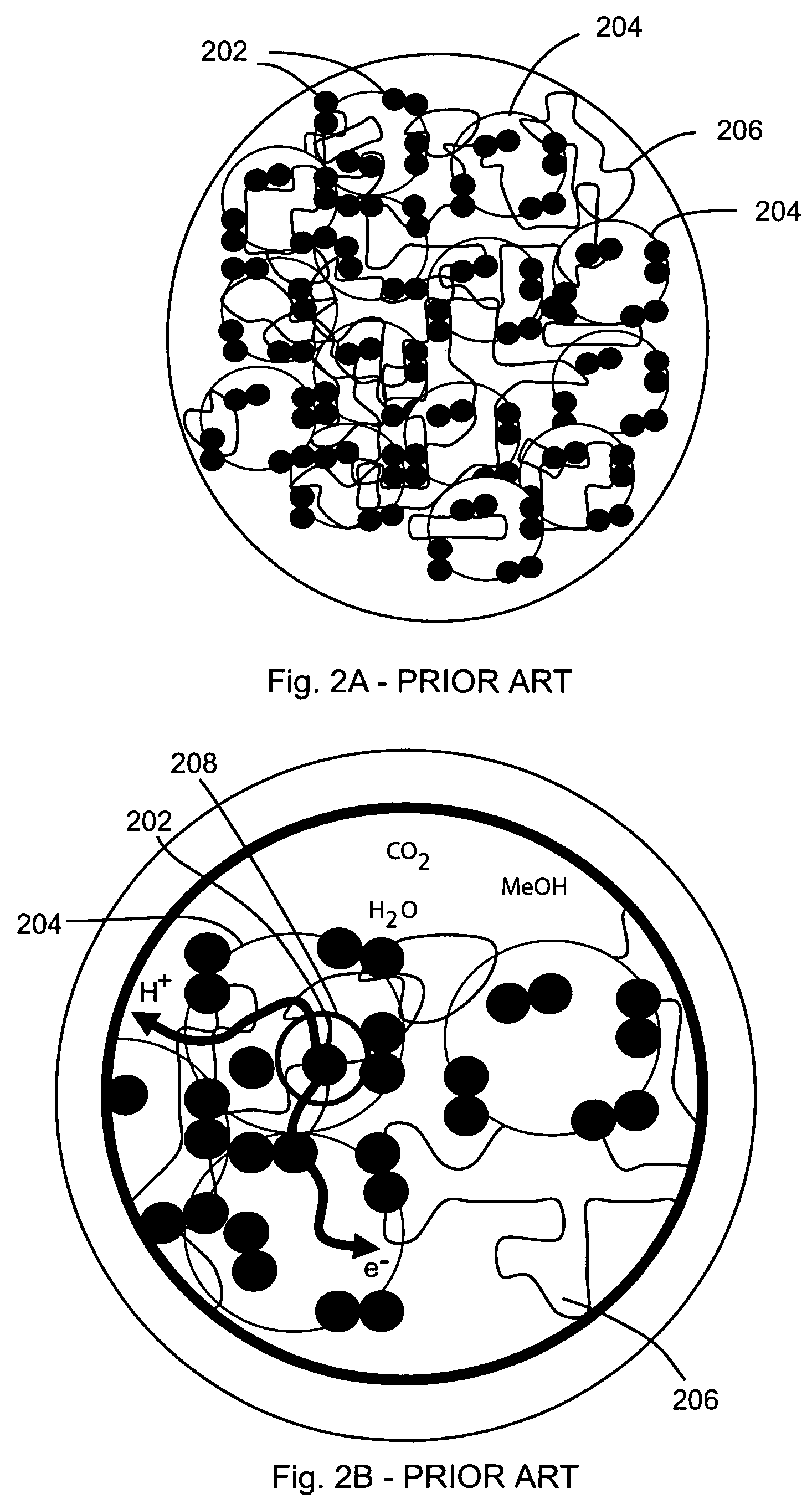Nanowire-based membrane electrode assemblies for fuel cells
a fuel cell and electrode technology, applied in the field of fuel cells, can solve the problems of large quantity of expensive platinum (and/or ruthenium) catalysts, low efficiency and power density, and inability to embrace dmfcs, and achieve the effects of reducing cost, increasing power density, and increasing catalyst utilization ra
- Summary
- Abstract
- Description
- Claims
- Application Information
AI Technical Summary
Benefits of technology
Problems solved by technology
Method used
Image
Examples
example
[0069]The following non-limiting example describes an exemplary process for depositing gold (Au) nanoparticles on the surface of nanowires for use in a membrane electrode assembly according to the teachings of the present invention.
[0070]Approximately 10 mg Si nanowires were dispersed in ethanol by sonication to form a nanowire suspension. An interconnected nanowire network was prepared by vacuum filtration of the nanowire suspension over a polyvinylidene fluoride (PVDF) membrane and vacuum drying, then 2 cc 0.1% polylysine solution was added to the filter funnel to absorb polylysine on the surface of the nanowires. After 5 minutes, all liquid in the funnel was vacuum removed and the nanowire network was separated from the PVDF membrane. After being dried in an oven at 100 degrees Celsius for 15 minutes, the nanowire network was submerged in 10 cc of 10 nm Au colloid solution and soaked for 20 minutes to absorb the Au nanoparticles on the surface of the nanowires. Finally, the nanow...
PUM
| Property | Measurement | Unit |
|---|---|---|
| diameter | aaaaa | aaaaa |
| diameter | aaaaa | aaaaa |
| diameter | aaaaa | aaaaa |
Abstract
Description
Claims
Application Information
 Login to View More
Login to View More - R&D
- Intellectual Property
- Life Sciences
- Materials
- Tech Scout
- Unparalleled Data Quality
- Higher Quality Content
- 60% Fewer Hallucinations
Browse by: Latest US Patents, China's latest patents, Technical Efficacy Thesaurus, Application Domain, Technology Topic, Popular Technical Reports.
© 2025 PatSnap. All rights reserved.Legal|Privacy policy|Modern Slavery Act Transparency Statement|Sitemap|About US| Contact US: help@patsnap.com



